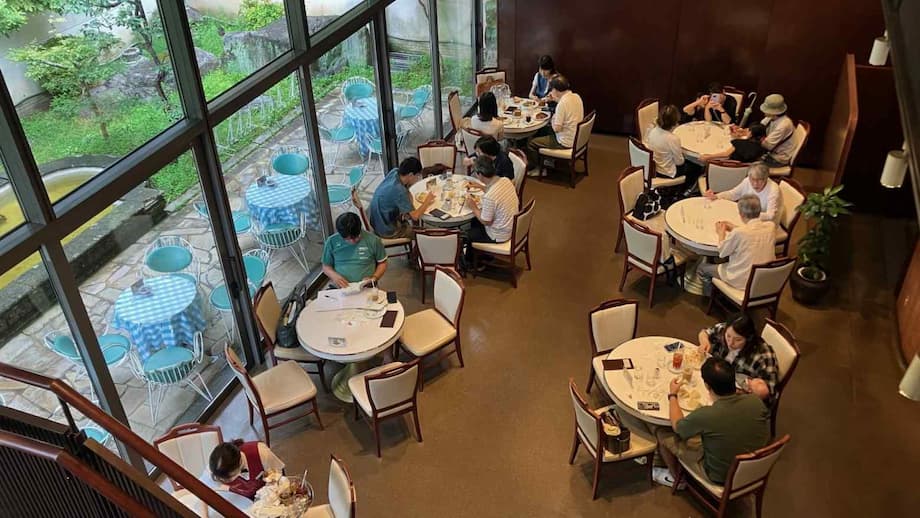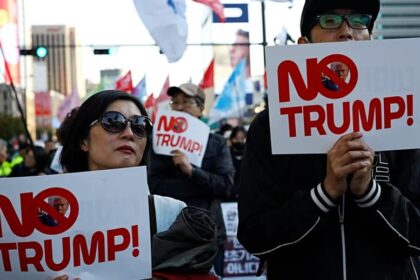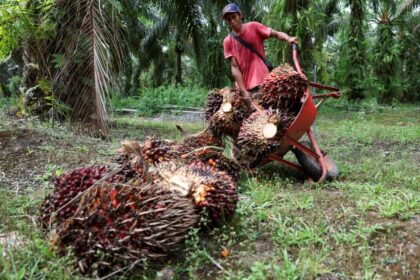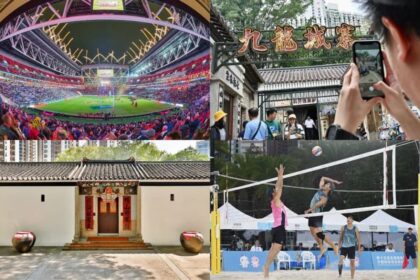A city where kissaten meet specialty labs
Kyoto, long defined by temples, tea rituals, and wooden townhouses, is now a showcase for one of Japan’s most dynamic coffee scenes. The city’s heritage cafes, known as kissaten, still serve carefully brewed cups in serene rooms, while a new wave of specialty roasters presents bright, fruit-forward profiles with precision gear. Between these poles, a playful thread has appeared. Cafes across the city have introduced anime and manga themed menu items, tie-in desserts, and latte art that nods to fan culture. The result is a landscape where Inoda Coffee’s flagship, set in a traditional machiya townhouse, shares attention with minimalist roasteries and pop culture friendly hangouts that speak to younger customers as well as global visitors.
- A city where kissaten meet specialty labs
- Why Kyoto embraced coffee
- Old school cafes adapt without losing Kyoto character
- Specialty roasters push lighter roasts and transparency
- Anime and manga themes change the cafe playbook
- Brewing methods and the Japanese toolkit
- Tourism, students, and neighborhoods shape demand
- Challenges behind the counter
- Key Points
This shift did not happen overnight. Kyoto has a reputation for meticulous craft, from ceramics to confectionery, and that attention now extends to beans and brew methods. Established houses have modernized equipment and trained staff on pour over and espresso, while new entrants roast in small batches and highlight detailed sourcing. Chains and independents are experimenting with themed seasons that align with manga exhibits, film releases, or student calendars. Specialty counters operate inside renovated machiya, under train arches, and along back alleys near major stations. Together they tell a story of a city that blends heritage and innovation in a cup.
What is changing
Traditional cafes once leaned toward darker roasts and rich, mellow cups. Today many are offering lighter roasts and single origin beans with transparent origins. Breakfast sets remain popular, but menus now feature espresso, hand brews, and seasonal coffee tonics. On the other side, specialty roasters have softened their edges, adding familiar sweets, light meals, or matcha laced drinks that help first-time visitors feel welcome. Anime themed items, from character cookies to illustrated latte art, attract students and tourists who discover that the coffee is not a gimmick. It is a bridge into a deeper scene.
Why Kyoto embraced coffee
Japan’s coffee story reaches back to the 17th century through Dutch traders, but the drink spread widely after the late 19th century and gained speed after World War II as kissaten became part of daily life. Kyoto adopted coffee with its own steady rhythm. The city’s layout, defined by walkable neighborhoods and preserved architecture, invites small, character-rich cafes. The culture prizes quiet craft and measured service, values that align with the ritual of careful brewing. Inoda Coffee and other long-running houses illustrate how Western inspired breakfasts, refined tableware, and a calm pace found a home here.
From kissaten roots to third wave
Specialty coffee’s rise in Japan in the 2010s brought fresh attention to bean quality, direct relationships with growers, and new roasting approaches. That movement did not replace kissaten so much as reconnect with them. Japan’s traditional cafes helped drive the development of the equipment used in modern specialty bars. The siphon gained popularity in Japan in the early 20th century, the Kono dripper and nel drip method evolved through decades of trial, and brands like Hario and Kalita refined paper filters and pour over gear now seen worldwide. Kyoto based operators often honor these tools while presenting lighter roasts and transparent sourcing.
One Kyoto roaster, Kurasu, has argued that the old and new are closer than they seem. In its journal, the company describes how both paths draw on the same mindset of careful, hands-on preparation and ingredient focus.
Kurasu, a Kyoto roaster and cafe operator: “Both share a dedication to craftsmanship and coffee quality.”
This blend of heritage methods and modern roasting is central to Kyoto’s appeal. Visitors might watch a barista grind a washed Ethiopian for a V60, then see a siphon in action at a neighboring kissaten. The city embraces the full range, which deepens options for novices and purists alike.
Old school cafes adapt without losing Kyoto character
Inoda Coffee’s main location, set in a machiya style building, captures the balance many travelers come to Kyoto to find. The setting is classic, with polished wood, natural light, and a gracious pace. Yet the coffee program is not stuck in time. Updated grinders, refined roast curves, and a wider selection of beans are now common across legacy cafes. The staff keeps breakfast sets, cakes, and sandwiches that regulars expect, while offering cups that speak to today’s preferences.
What adaptation looks like
Heritage venues across the city have tried limited-run menus tied to museum shows or pop culture festivals, especially when the Kyoto International Manga Museum hosts popular exhibitions. Some offer character shaped cookies or latte art on weekends, not as a permanent turn but as a seasonal flourish. Behind the scenes, training cycles now include pour over technique, water temperature control, and espresso dialing, so a customer can order a nostalgic blend or a bright single origin and still feel the cafe’s original soul.
Specialty roasters push lighter roasts and transparency
Kyoto’s specialty scene leans on clarity and detail. Light to medium roasts shine at venues that foreground origin and process. Kurasu Kyoto Stand, near the main station, pours beans from Japan and abroad, often rotating origins through hand drip and espresso. WEEKENDERS COFFEE TOMINOKOJI runs a compact bar inside a renovated machiya, pairing careful pour overs with seasonal drinks in a courtyard setting. Goodman Roaster Kyoto has poured rare Taiwanese lots, while COYOTE the ordinary shop highlights relationships with producers in El Salvador. The goal is the same across these stops, to present traceable coffees with clean profiles and articulate sweetness.
Where to taste
Travelers can structure an entire morning around this cluster. Start near Kyoto Station for a flight at Kurasu, then walk or cycle to TOMINOKOJI for a hand brew in a peaceful yard. Fans of small producers can seek out COYOTE and ask about its El Salvador connections. Those looking for a gentle intro to specialty can try a balanced blend at blend kyoto or a soft, comforting cup at common, then compare with a brighter fruit note at Nijokoya or a slow bar at coffee.roast.yui. Each shop preserves a distinct mood, from pristine counters to snug machiya rooms.
Anime and manga themes change the cafe playbook
Kyoto’s cafes are not turning into theme parks, but many now treat anime and manga as seasonal accents that bring energy and new faces. Tie-ins range from character latte stencils to limited desserts shaped around a storyline when a series premieres or a museum show opens. A few chains in the city run ongoing collaborations that add cute packaging, collectible coasters, or latte art. These touches encourage friends to meet up, take photos, and stay for another round. For operators, themed items help bridge weekdays and tourist lulls, while the core menu keeps regulars coming back.
It is helpful to distinguish anime inspired offerings from manga kissa, which are internet and reading cafes found across Japan. Manga kissa provide private booths, comics libraries, and overnight packages, not a specialty bar model. Kyoto’s current trend sits in between, traditional and specialty cafes using pop culture as an entry point, not a substitute for quality. The latte may carry a character face, but the beans are still fresh, the pour still measured, and the extraction still precise.
Why it resonates with younger drinkers
Anime has a loyal audience in Kyoto’s student population, and collectible items or creative latte art have instant social media appeal. These menus also lower the barrier for newcomers who are curious about specialty but intimidated by jargon. A themed cookie or a matcha coffee float feels friendly. Once seated, guests often try a hand drip or single origin espresso that they might have skipped elsewhere. For many cafes, this path converts a first visit into a habit.
Brewing methods and the Japanese toolkit
Japan’s contribution to coffee technique is visible at nearly every serious counter in Kyoto. Pour over dominates, especially with Japanese drippers like the Hario V60 and the Kalita Wave. The nel drip, a flannel filter method with a thicker mouthfeel, is still practiced at select kissaten. The siphon, with its glass chambers and theatrical movement, can appear science heavy, yet it has a long record in Japanese cafes and produces a clear, round cup when dialed well. Many techniques grew out of requests from cafe owners a century ago, refined by companies that listened and iterated.
Brewers choose methods for specific reasons. The V60 emphasizes clarity and aromatics. The Kalita’s flat bed can smooth out extraction for balanced sweetness. Nel drip pairs well with chocolaty blends. Siphon highlights clean body and floral notes. Water and grind add another layer. Kyoto has relatively soft water compared to some regions, and baristas adjust grind size and temperature to keep brightness without sourness. The focus on details rewards patient drinkers, and it keeps the craft anchored to tangible variables, not trends.
Tourism, students, and neighborhoods shape demand
Kyoto’s cafe map follows its footpaths. Shops near Kyoto Station and along Karasuma suit commuters and day trippers heading to Nishiki Market or the Imperial Palace grounds. East side stops capture those walking to Gion and Higashiyama’s temples. Smaller counters thrive in residential lanes where regulars want a quiet seat and a consistent pour. The city’s university network adds weekday energy, with students studying over filter coffee or meeting over espresso tonics and seasonal sodas.
Service style reflects Japanese norms. Seating can be limited, lines form at peak hours, and staff prioritize a calm room. Guests are encouraged to speak softly, put phones on silent, and enjoy the pace of the brew. Many counters accept cash only, though that is shifting. It is common to order at the counter, take a number, and return trays when finished. This rhythm keep spaces tidy and relaxed, which regulars value as much as the coffee.
Etiquette tips for visitors
- Order at least one drink per person and avoid occupying large tables alone during rush times.
- Speak quietly and keep phone calls outside or brief.
- Ask before taking close-up photos of staff or equipment.
- Use cash or check for QR payments if cards are not accepted.
- Return trays, and do not move furniture without asking.
Challenges behind the counter
Behind the scenes, roasters and cafe owners face rising green coffee costs, shipping volatility, and the need to keep skilled staff in a service industry under pressure. Aging proprietors at some kissaten are weighing succession plans, and younger teams must balance rent, equipment investment, and training. Many respond by diversifying, selling whole beans, subscriptions, and brewing gear. Others stage limited collaborations, including anime tie-ins, to smooth seasonal swings. Transparency around sourcing and prices helps explain why a carefully brewed cup carries a premium.
Sustainability is another concern, from packaging to waste and energy use. Some Kyoto shops have moved to reusable filters or greener power sources, and many encourage guests to bring their own tumblers. Roasters often seek long-term relationships with growers to support stability at origin. None of these changes happen quickly, yet the pattern is consistent. Quality and care remain central, even as menus and methods evolve.
Key Points
- Kyoto’s coffee scene spans heritage kissaten, modern specialty roasters, and cafes with anime or manga themed items.
- Inoda Coffee’s flagship, set in a machiya townhouse, symbolizes the city’s blend of tradition and innovation.
- Specialty shops highlight single origin beans, lighter roasts, and hand brewing methods like V60, Kalita, nel drip, and siphon.
- Kissaten and specialty bars share a craft mindset, with Japanese equipment design shaping global coffee practice.
- Anime tie-ins draw younger customers without replacing quality, often serving as a friendly entry to specialty coffee.
- Neighborhood geography, tourism, and student life drive a diverse cafe map across Kyoto.
- Etiquette focuses on quiet rooms, counter service, and considerate photography, with some shops still cash only.
- Operators face rising costs and staffing pressures, responding with bean sales, subscriptions, and seasonal collaborations.












